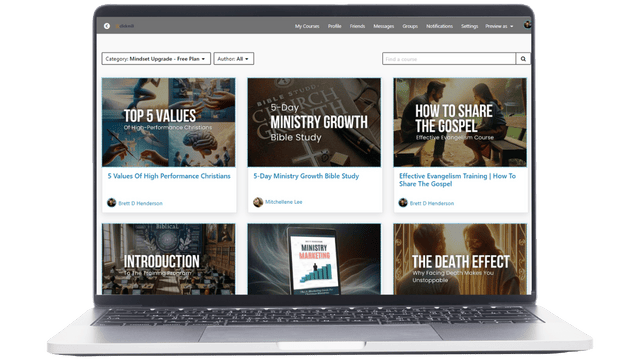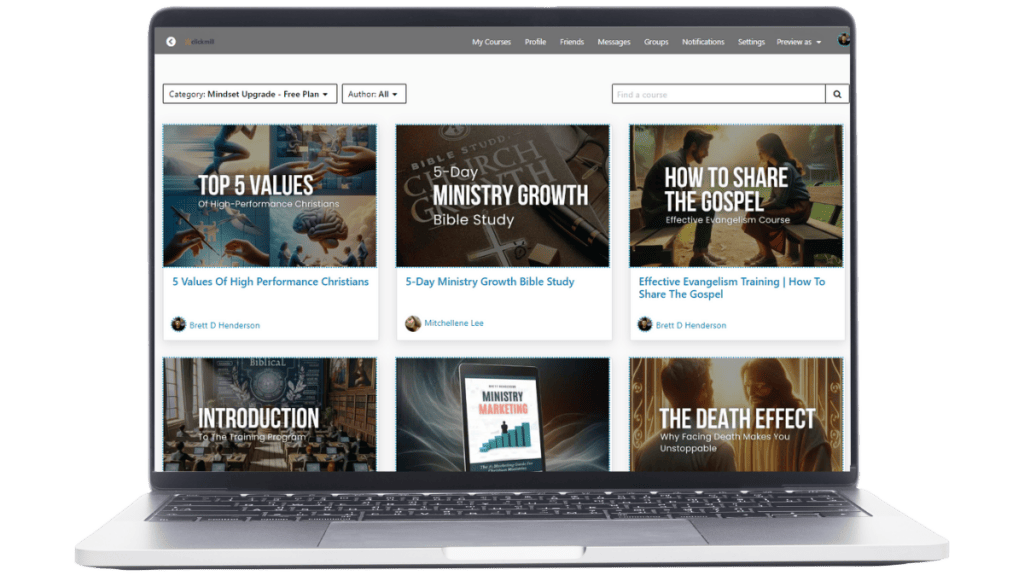The way you choose to go about a ministry launch or even the launch of a new project can be just as important as the project itself.
Whether it is a new social media post or a new church launch, the effort you spent making a quality service will be wasted if you release it in such a way that nobody will ever see it. In this regard, coming up with a ministry launch strategy is not so different from the process of making a brand launch strategy.
But the question is, which launch marketing strategy should you use for your next church launch?
To find the answer to that question, we’ll be looking at the two main church launch ideas: the Big Launch Strategy, and the Instapost Strategy (also known as the Quick Post Strategy).
Let’s get right into it!
Ministry Launch: Big Launch Strategy
As the name suggests, the Big Launch Strategy is a strategy where you heavily market a new project beforehand, so that you can gather a lot of attention to the official release. With the rise of consumerism, this strategy has become very popular in the West. Both businessmen and ministry leaders alike love to sensationalize their new projects in hopes of generating massive growth when they finally release it to the public.
But does this strategy actually work?
The success of your Big Launch Strategy is dependent on your ability to meet your audience’s needs.
At their core, every Big Launch Strategy is a promise to fulfill a need of some sort.
Think of all the commercials that come out every time Apple is about to release a new iPhone. One reason that those commercials are so successful at capturing people’s attention is because of all the promises they make–the new iPhone will have a camera that’s like nothing else on the market, and there will be new social features that will allow you to make a deeper connection with others, etc.

While it is up for debate whether or not Apple has actually fulfilled all of their promises, we can see that many customers at least felt like Apple has fulfilled their expectations based on the fact that iPhones are still popular today.
But imagine if Apple had completely let down everyone’s expectations by giving people a cardboard cutout of a phone without any of the promised features. Or worse yet, imagine if Apple had advertised a cardboard cutout of a phone with no features. In both of these hypothetical scenarios, the Big Launch Strategy would be unsuccessful because Apple either failed to meet a need, or tried to meet a need that didn’t exist (the need for an expensive, useless, cardboard phone.)
Sadly, many churches end up making one of these two mistakes. In some cases, ministry leaders think they know what people want, only to find out that they were wrong after going through all the effort of setting up a Big Launch that nobody attended. In other cases, the Big Launch is wildly successful, but unrelated to the church and its vision. Because of this, people who came in because of the Big Launch will be disappointed when they find out what the church is actually like.
This doesn’t necessarily mean that the Big Launch strategy will be bad for your ministry, it just means that there are pros and cons to consider.
If you are enjoying this post – you will really love our ultimate guide to church marketing titled, Digital Marketing For Churches: #1 Church Marketing Guide.
Pros & Cons Of The Big Church Launch Strategy
One of the biggest benefits of the Big Launch Strategy is the attention it draws to your new project. In marketing, attention is like a currency that can be cashed out for bigger commitments from your audience in the future. After all, you can only convince people to buy your product after you’ve gotten their attention.
get 4 FREE Online Church Growth courses + 2 Ebooks, & More!
Access 4 Courses, 2 eBooks, Live Group Chat, Live Online Classes & More! Get The Growth God Has For Your Ministry – Get Your Free Account Today!

However, whether or not all this attention is a good thing in the long run is dependent on whether or not you have actually met your audience’s needs. This benefit can turn into a detriment if you don’t fulfill your promise to the audience, causing them to gain a negative impression of your ministry.
In fact, it is this feeling of disappointment and frustration that drives many people away from the church. They may have gone to church with a need in the past, only to feel rejected or ignored.

It’s difficult to target people’s needs with the Big Launch Strategy because there is little room for early feedback, which is another con. When you put so much emphasis on one big release, there aren’t many opportunities to test your new product out on smaller groups and gauge their responses.
That brings us to the final major con of the Big Launch Strategy: it takes a lot of time, effort, and resources. The cost can be justified if there is a good outcome, but success isn’t always guaranteed. Especially if you are going in blind because of limited feedback, there is a high chance that your efforts will be wasted.
Furthermore, the Big Launch can take your attention away from other projects in your church that have been going on for much longer. Pastors we worked with have admitted that certain big events they held at their churches distracted them from their year-round ministries.
Ministry Launch: Instapost Or Quick Post Strategy
So what’s the alternative to the Big Launch Strategy? The other option is the Instapost/Quick Start Strategy. As the name suggests, this is a strategy where you release your new project as soon as it is finished, without doing extra work to advertise it beforehand.

With the Instastart strategy, post your new content on social media as soon as you’re done editing it, or you can start your new ministry as soon as you have all the necessary resources.
(Psst–if you’d like to learn more about posting on social media as a ministry leader, check out our guide here: Church Social Media Strategy Guide + Christian Social Media Tips)
This doesn’t mean that you don’t tell anybody about your new project, because you have to announce it to people in order to get them involved, but it means that you don’t spend a lot of time and resources trying to get the word out.
It is similar to what marketers call a soft release, which happens when a product is only made available to a limited group for testing. In the case of the Instapost Strategy, the group is limited to everyone who knows about the new product, and you can use the response of those people to predict the success of your service with a larger audience.
You may already see a few potential advantages and disadvantages with the Quick Start Strategy, so let’s go over them in more detail.
The Pros And Cons Of The Instapost/Quick Post Strategy
One of the biggest advantages of the Instapost Strategy is the low drain on effort, time, and resources. This means that you can send out multiple new projects at once, deciding which ones to keep based on your audience’s response and eliminating the rest. Unlike the Big Launch Strategy, the Quick Post Strategy gives you plenty of time to gather feedback and revise accordingly.
This leads us to the next advantage–the Instastart Strategy allows you to do passive ministry. Similar to how business people can make passive income by setting up a system that generates money without requiring their participation, ministry leaders can use the Instant Post Strategy to set up a system that continues to bless people even when the leaders themselves aren’t present.
get 4 FREE Online Church Growth courses + 2 Ebooks, & More!
Access 4 Courses, 2 eBooks, Live Group Chat, Live Online Classes & More! Get The Growth God Has For Your Ministry – Get Your Free Account Today!

For example, when you post a sermon on Youtube, people can continue to receive guidance and support from the recording without requiring you to repeat the message over and over for them. The sooner you get that video posted, the sooner you can start doing passive ministry. When you choose to post big and not to post fast, you delay that passive ministry in hopes of getting a greater result when the product is finally released.
In the case that the Big Post Strategy does achieve a greater result, then it would be more successful than the Quick Post Strategy. One of the biggest disadvantages of the Instant Post Strategy is that it doesn’t generate that much attention. As we have discussed previously, you must first get people’s attention before you can lead them to do anything.

While the Instapost strategy allows you to test out your new project in a low-stakes environment, it will also limit your progress in the long run.
What Is The Best Ministry Launch Strategy?
So which strategy is best for your ministry launch? While you may think of the issue as “Big Launch Strategy OR Instapost/Quick Post Strategy,” it is actually an issue of “Big Launch Strategy AND Instapost/Quick Post Strategy.” Let me explain.
While both strategies have their respective pros and cons, they can supplement each other and make up for those cons while keeping all the pros when used together.
Here is the strategy that we recommend:
- Brainstorm which needs could be met by your new projects. Once you’ve finished setting up each project, use the Instapost Strategy to test them out with a limited group. In this particular case, having a smaller audience and less attention is actually a good thing because it reduces the consequences of incorrectly determining people’s needs.
- Based on your audience’s feedback, make changes where necessary. Remove the projects that people aren’t interested in, and improve the projects that do meet people’s needs.
- Once you have refined your projects and narrowed it down to one or two really good ones, it’s time to use the Big Launch Strategy. Now that you have a little more data to suggest that these new projects will be a worthwhile investment, you can put a lot of time, effort, and resources into drawing people’s attention to them. This way, you will get the benefits of both strategies while reducing the downsides of each.
And that about wraps it up for this post on church launch strategy. Did this article meet your needs? Let us know in the comments!
And don’t forget to check out our Youtube video to gain more insight on this topic.


Responses